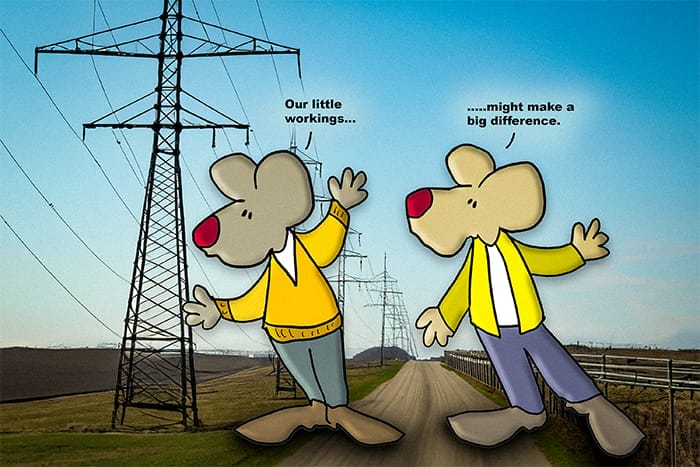Here is something most people don’t know. Forty percent of U.S. electricity goes into powering our homes. That’s really a lot when you think about it, given our business sectors and infrastructure and everything else.
So why is there this huge glut of energy consumption in the residential sector? Well, it is pretty simple, really. Home appliances draw extreme amounts of energy.
The math on it breaks down loosely to this. An appliance rated at 1,000 watts, left on for one hour, will use 1 kWh of electricity. And that adds up.
So, what uses the most electricity in a home?
Here are the top five things from the bottom up.
5. Lighting
Oh, let there be light. Our lit homes account for 4.4 percent of residential energy usage. Clap on. Clap off.
There is good news, though, with modern science. New LED light bulbs use significantly less energy than incandescent bulbs and even CFL bulbs.
There are lots of ways to cut down, like switching to LED and putting lights on timers. Or, just turning lights off when we aren’t really using them.
4. Refrigerators and Freezers
Refrigerators use the most energy of any kitchen appliance. We have to keep our cold cuts, cold. And our ice, icy.
How much energy your fridge uses, however, depends on your particular model. That’s the thing about energy ratings for any particular appliance: The range is vast. Some people still have refrigerators from the 1980s (or even earlier), which means they’re still using thousands of kWh every year (and enduring a commensurate electricity bill).
There are a lot of things you can do to save energy in your fridge. But an easy one is to check the thermostat. For refrigerators, 40 degrees Fahrenheit (4 degrees Celsius) is ideal; for freezers, it’s 0 degrees Fahrenheit (-18 degrees Celsius).
3. Water Heating
I have to admit. I love a hot, hot shower. But, according to the U.S. Department of Energy, heating water was responsible for 11 percent of U.S. home energy. We use the water heater in so many applications: showers, cleaning dishes, cleaning clothes. Let’s face it. Hot water is a standard part of our daily routine.
A lot depends on the heater itself. Some are better at saving energy than others. There is much we can do to knock down the costs. But one thing, again, is to check the thermostat. You probably don’t need your water hotter than 120 degrees F (50 degrees C). Unless you are me and you are excessive in this way.
2. Home Heating
A home heating system is one of the hungriest home appliances. It’s also arguably the most necessary one.
We all know the drill on this. Turn the temperature down. Again, this is not doable for me. I need warmth.
And finally, the number one consumer?
1. Air Conditioning
In 2020, almost 88 percent of homes in the United States used air conditioning. Air conditioning, which typically uses high-watt machines for extended periods of time, accounts for a big chunk of residential energy use.
On a personal note, this is where I save a lot of energy. I can’t stand air conditioning. I’ve come to dislike summertime because of air conditioning. I absolutely hate going into restaurants or other places where it is so cold you can see your breath. But some people bask in this. Not me. I’m not a seal or a walrus. I am a meerkat.
So there they are. The big consumers of energy.
And I thought walking up a flight of stairs took a lot of energy.
“””””””””””
“Earth provides enough to satisfy every man’s needs, but not every man’s greed.”
– Mahatma Gandhi
“””””””””””
“Every act of energy conservation… is more than just common sense: I tell you it is an act of patriotism.”
– Jimmy Carter
“””””””””””
“Once you got a solar panel on a roof, energy is free… Once we convert our entire electricity grid to green and renewable energy, cost of living goes down.”
– Amory Lovins (physicist and sustainability expert)
“””””””””””
The big five when it comes to electric. Shazam!
